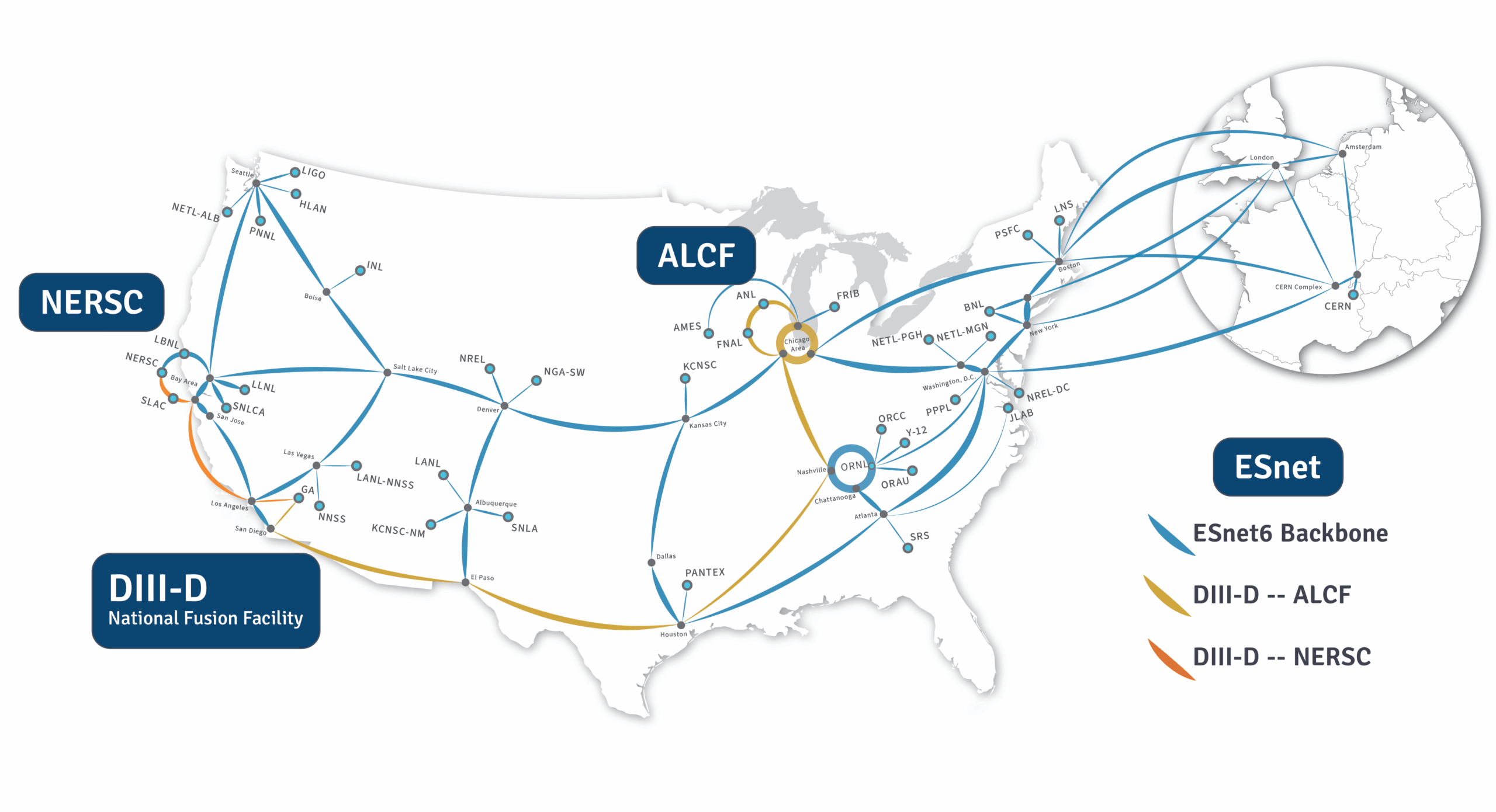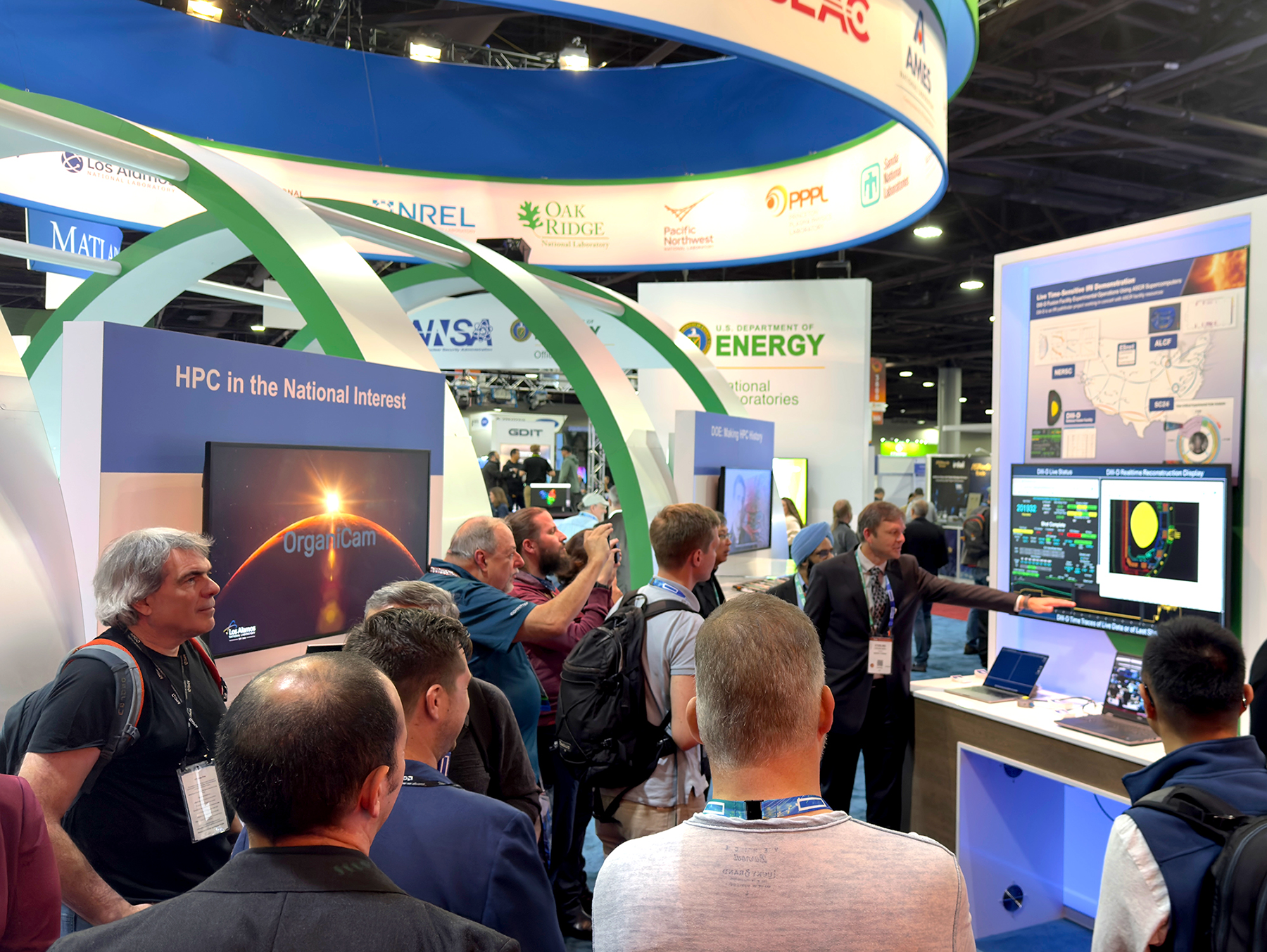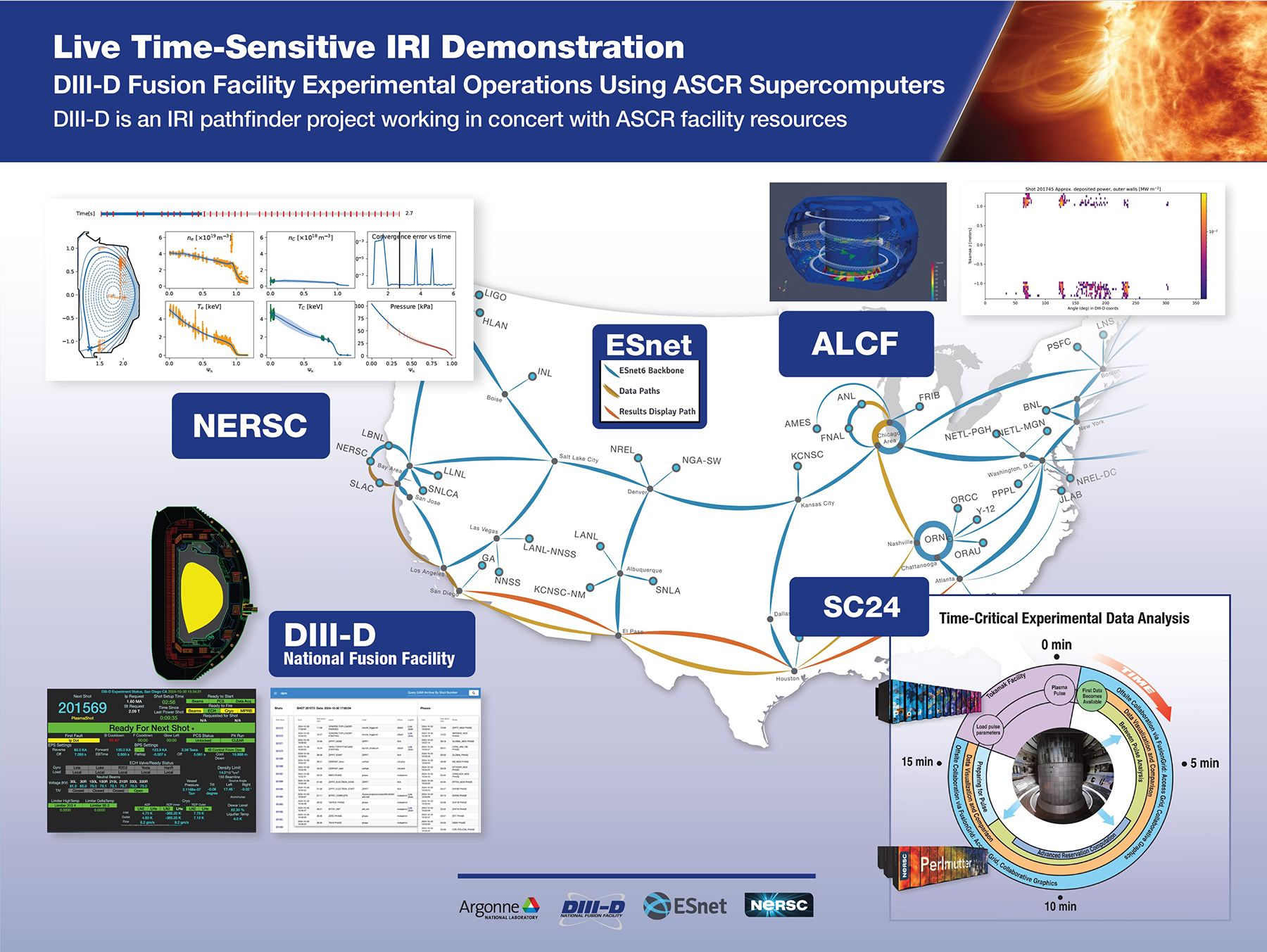DIII-D and the U.S. DOE Integrated Research Infrastructure
Incorporating Advanced Computing into DIII-D Science
Integrated Research Infrastructure
The U.S. Department of Energy’s Integrated Research Infrastructure (IRI) connects the DIII-D National Fusion Facility with advanced computing resources to speed innovation and optimization in fusion science and technology. ESnet connects DIII-D with the National Energy Research Scientific Computing Center (NERSC) and Argonne Leadership Computing Facility (ALCF), integrating our experimental facility with high-performance computing facilities to increase what can be learned from fusion experiments. This integration of resources via technologies like Globus is speeding discoveries for fusion science and technology by making fusion data from DIII-D more useful and accessible.

CAKE Workflow
The Consistent Automated Kinetic Equilibria (CAKE) workflow rapidly produces full profiles of plasma behavior during experiments when run on the Perlmutter supercomputer at NERSC. This provides researchers with much more data than was previously available, providing essential details in a timely manner to guide experimental decision-making. These results are also being used to develop an extensive database of high-fidelity results that can be analyzed to provide new insights and applied to improve planning of future experiments.
IonOrb Workflow
The second code, IonOrb, calculates the trajectories of particles in the DIII-D tokamak to identify sites of vessel wall heating from Plasma Control System input data, with the code currently running on the Polaris supercomputer at ALCF. The results are dynamically updated during the course of an experiment to identify any potentially impacted instruments. When IonOrb is fully implemented, the DIII-D team expects to be able to use this workflow for machine protection, allowing the operators to shift plasma settings in response to any identification of potential damage.
Workflow Access
Notably, these resources are available to the entire DIII-D team; individual investigators do not need to acquire their own supercomputing allotment to access these workflows. This broad accessibility is improving the science performed by all participants in the DIII-D program, ensuring that researchers glean the most information possible from DIII-D data and develop the most informed experiments possible to advance the field. With this successful implementation of the Integrated Research Infrastructure, DIII-D and advanced computing facilities are accelerating the progress toward answering the remaining science and technology challenges for fusion energy.
SC24 Demonstration
To demonstrate how the Integrated Research Infrastructure supports fusion scientists during an experiment, a demonstration of the workflows involving DIII-D, NERSC, and ALCF was presented at SC24. Sterling Smith, DIII-D Software Developer Group Manager, provided a live explanation of on-demand high-performance computing occurring during a DIII-D experiment, including the execution of the CAKE and IonOrb workflows.



